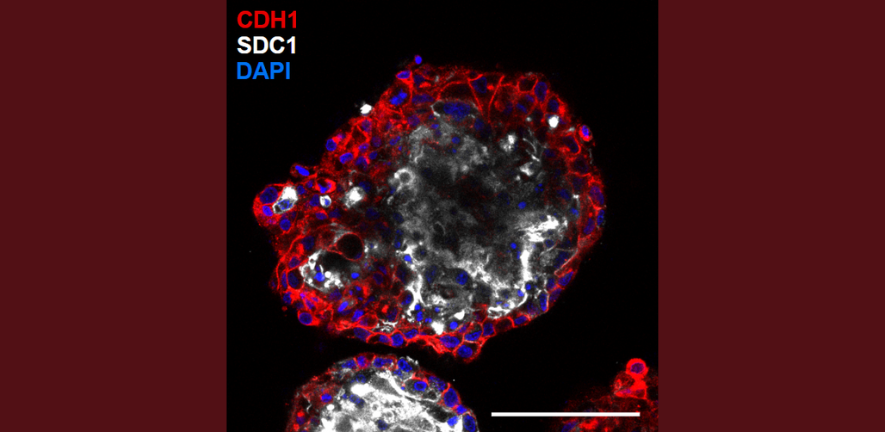
Submitted by Emily Rigby on Wed, 08/01/2025 - 21:23
Congratulations to members of the PDN community, who published a new paper today in Cell Stem Cell, highlighting various findings that are significant for both stem cell and developmental biology.
The paper, ‘Ectopic expression of DNMT3L in human trophoblast stem cells restores features of the placental methylome’, demonstrates that ectopic expression of the gene DNMT3L plays a role in setting the pattern of DNA methylation in human trophoblast cells and by extension, in very early human embryonic development. Excitingly, this appears to be conserved between mice and humans.
Human trophoblast stem cells (hTSCs) are used to model the precursor cells that can make all the different cell types in the placenta, cytotrophoblast (CTB). Much like embryonic stem cells (ESCs) model the cells in the early embryo that make all the cell types in our bodies. We can use these hTSCs in the lab to study the placenta, such as looking at the role of different genes or chemicals in trophoblast cells’ growth and identity. However, there is one layer of information that these cells don’t model very well: epigenetics. Epigenetics is the information that sits on top (epi) of the genetic information: it tells the cells how to use their DNA. The type of epigenetics we assessed in this paper is DNA methylation. Placental CTB cells have a different pattern of DNA methylation compared to other cell types in our bodies; they have large regions of the genome with intermediate levels of DNA methylation, referred to as partially methylated domains (PMDs). PMDs are a conserved feature of trophoblast cells across many different species.
In hTSCs, these PMDs have become aberrantly very lowly methylated. When we give the hTSCs an extra copy of the gene, DNMT3L, and use antibiotics to drive expression of this gene, we see an increase in DNMT3L expression, termed DNMT3L-over expression (DNMT3L-OE). DNMT3L is a protein that binds the enzymes, DNMT3A and DNMT3B, which deposit DNA methylation. When we assess the resulting change in DNA methylation in the DNMT3L-OE hTSCs, the PMDs become correctly, intermediately methylated. When we compare the DNA methylation pattern in DNMT3L-OE hTSCs to CTB cells in the placenta, we see that they look much more similar than hTSCs that do not express DNMT3L.
Since their derivation in 2018, hTSCs have been widely studied and are now considered the gold standard in modelling of the early human trophoblast. Importantly, in addition to incompletely modelling the pattern of DNA methylation in early trophoblast, hTSCs do not reflect the cell type they were derived from, either. This means they cannot be used to study patient-specific abnormalities, from an epigenetics standpoint. Another important consideration for their use in the study of human development, is the importance of epigenetic patterning during the transition from pre- to post-implantation development, as the DNA methylation of hTSCs does not reflect a cell type found in human development.

